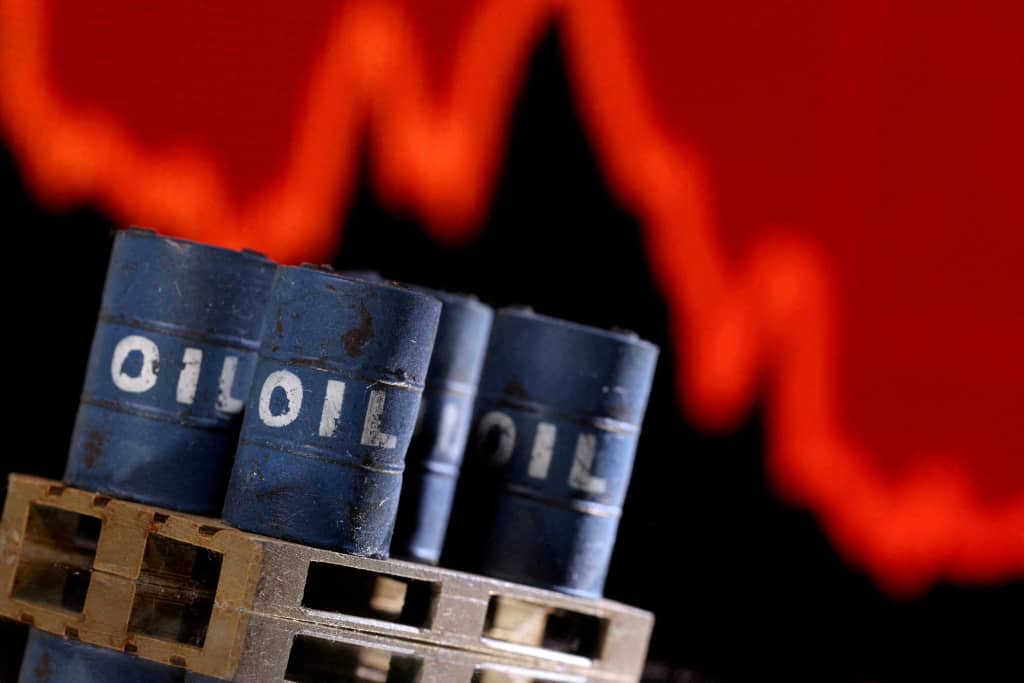Global oil markets reacted with cautious optimism on Tuesday as crude prices fell slightly in the wake of high-profile talks between U.S. President Donald Trump and Ukrainian President Volodymyr Zelensky.
Traders are now eyeing upcoming trilateral negotiations that could potentially lead to a ceasefire agreement and the lifting of sanctions on Russian crude.
At the time of writing, Brent crude was trading at $66.07 per barrel, while West Texas Intermediate (WTI) hovered at $62.90 per barrel.
Both benchmarks had inched higher on Monday as Zelensky arrived in Washington for discussions with Trump, but momentum quickly reversed as details of the talks emerged.
Analysts say the prospect of peace in Ukraine and, by extension, an easing of sanctions on Russian oil exports has introduced volatility into the market.
Sanctions have kept a significant portion of Russian supply out of formal markets since the invasion began, tightening global crude flows and underpinning higher prices.

“Betting markets aren’t overly convinced that we’ll see a ceasefire before the end of the year.”
ING’s Warren Patterson and Ewa Manthey
The analysts pointed out that a key stumbling block remains the status of the Donbass region, most of which is already under Russian control.
For Ukraine, surrendering Donbass remains unacceptable, while for Moscow it is seen as a non-negotiable condition for peace.
“This marks the prospect of peace quite considerably unless both sides are willing to make concessions.”
ING’s Warren Patterson and Ewa Manthey
Betting Markets Reflect Cautious Sentiment

Prediction platforms have mirrored this uncertainty. According to Polymarkets, the probability of a ceasefire by year-end currently stands at 38%, a sharp decline from the 78% peak recorded in March. This shift, analysts say, has directly influenced oil price behavior.
Patterson and Manthey added, “The modest price action in the oil market this morning appears to fit with this view,” suggesting that while traders are hopeful, they remain skeptical about a rapid resolution to the conflict.
Compounding the uncertainty is President Trump’s recent announcement of an additional tariff targeting India, the world’s third-largest crude importer.
The tariff, set to take effect at the end of August, is intended as punishment for New Delhi’s continued purchases of discounted Russian crude despite Western sanctions.
The move threatens to disrupt existing oil trade flows and create friction in U.S.-India relations.
Analysts warn that the measure could also push India to seek deeper ties with alternative suppliers, further complicating the already fragile balance in global oil markets.
Pipeline Attack Limits Price Decline

While hopes of increased Russian supply weighed on crude prices, an unexpected development prevented a steeper decline.
Ukrainian forces reportedly launched an attack on the Druzhba pipeline, a key conduit for Russian crude exports to Hungary and Slovakia.
The pipeline, which typically transports around 200,000 barrels per day, suffered disruptions following the strike.
Though the damage was limited, the attack underscored the fragility of infrastructure in the region and the potential for sudden supply shocks.
For the global oil market, the stakes could not be higher. A peace deal that leads to the lifting of sanctions would likely bring millions of barrels of Russian crude back to official markets, easing supply constraints and driving prices lower.
But failure to reach an agreement or renewed escalation could have the opposite effect, tightening supplies and triggering fresh volatility.
READ ALSO: Ghana Set to Smash All 2025 Economic Targets – IC Research Hails Strong H1 Performance























